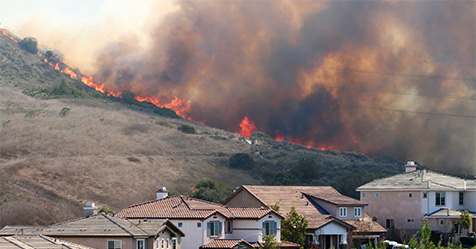 |
| School District Reduces Particulate Matter with ProTeam® Vacuums Eight years ago an Indoor Air Quality (IAQ) technician inspected the four elementary schools, middle school, and high school that comprise East Greenwich Public Schools in Rhode Island. She observed a lot of particulate matter in carpeted areas and warned school officials about the possible health impact. Particulate matter is microscopic solid or liquid particles that suspend in the air, including dust, pollen, dander, soot, smoke, etc. Particles smaller than 10 microns in diameter (a micron is a millionth of a meter or one-thousandth of a millimeter) can be breathed into the lungs, presenting a health threat to sensitive populations like those with asthma and allergies. The IAQ technician made a recommendation based on her findings: switch to ProTeam® vacuum cleaners with HEPA Level Filtration™. These vacuums capture and contain 99.97 percent of particulate matter down to 0.3 microns in size. This means that allergens and asthma triggers are reduced, creating a healthier and safer learning environment. The school district made the switch. They now use ProTeam upright vacuums, the ProForce® 1500XP HEPA and the ProGen® 15, to clean carpeted areas, and ProTeam backpack vacuums, the Super CoachVac® HEPA and the Super Coach Pro® 10, for hard flooring. The cleaning staff had never worked with backpack vacuums before and was uncertain about the switch. “There was resistance to the change initially,” said Bob Wilmarth, director of facilities and 10-year veteran of the school district. “Over the course of time, the staff has grown to like the backpacks. They are true timesavers.” Previously, Wilmarth’s staff cleaned hard flooring with oiled dust mops. They would push the debris from hallway and classroom floors together in piles to dispose of it. This created a couple of problems. The oil treatment yellowed the flooring, meaning they needed to strip and wax hard floors more frequently. The dust mops also pushed debris into corners and crevices, creating a grimy buildup over time. “Now we use a combination of ProTeam backpack vacuums and microfiber damp mops,” said Wilmarth. “There is a dramatic difference in cleanliness over the oiled dust mops. The buildup isn’t there in the corners, and we can go longer between floor stripping.” For carpeted areas, the district was using upright vacuums that cost about US$150 a piece. According to Wilmarth, these vacuums were better suited to cleaning homes than a school. They would wear out and break down quickly, and the district would have to buy a dozen more each year to replace their fleet.
Wilmarth has also implemented policies to rapidly follow up with any issues related to IAQ. This sends a strong message to the district’s 250 staff members and 2,500 students that their health and safety is of the utmost importance. “Whenever we get a complaint that could be related to indoor air quality, we send out questionnaires,” said Wilmarth. “We ask about the air quality. We ask if there have been any strange smells. We ask if there are new stains on the ceiling, floor, or walls. If we get hits back we investigate with air testing in the building.” For Wilmarth, all these efforts add up to creating a healthy learning environment for students. He has been heavily influenced by Rex Morrison’s work with the nonprofit consortium Process Cleaning for Healthy Schools and uses a combination of Morrison’s team cleaning approach and the more traditional zone cleaning approach. This blend of styles works for Wilmarth’s staff of 20 and keeps the health of the indoor environment a top priority. “If we are spreading germs while cleaning, that leads to less time with students in their seats,” said Wilmarth. “It is my firm belief that the more students are in their seats with a high level of Indoor Air Quality and good lighting, the more learning takes place.” For more information visit www.pro-team.com |





